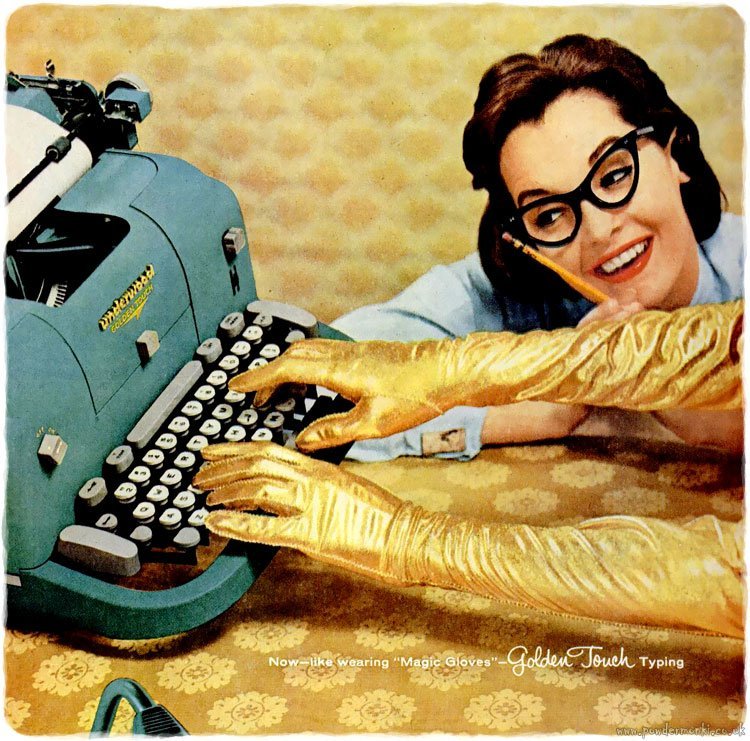Between the typewriter and the word processor there was a time - 1961 to 1975 or thereabouts - when one technology ruled the world of typing: the IBM Selectric!
Let's look back at the future of writing...
Let's look back at the future of writing...
The Selectric typewriter, launched in 1961, was a radical departure from the traditional typewriter. Out went the individual type bars striking an ink ribbon... 

...and in came the revolutionary golf ball typing head! Initially called a 'mushroom head' the golf ball tilted and rotated to match the right character with the right keystroke. 

The golf ball was designed to do many things by IBM. Firstly it would speed up typing: removing key jams and producing cleaner, evenly spaced type. It was almost impossible to jam. 

Secondly it would allow you to change fonts or even alphabets by swapping between golf ball heads. Scientific notation, Cyrillic script, italics - all were now easy to incorporate into your typing. 

The Selectric was an instant success and would eventually capture three quarters of the US business typing market. Later models allowed immediate corrections to be made by incorporating correcting fluid into the type ribbon cartridge. 

The Selectric, in the guise of the IBM 2741, also became the standard computer print terminal of the IBM range by the mid-1960s.
However the company missed a trick with this...
However the company missed a trick with this...

...as the golf ball head was not compatible with the ASCII standard for computer characters. IBM rejected the idea for unknown reasons.
I know, it's illogical!
I know, it's illogical!

In 1964 IBM paired the Selectric with a magnetic tape memory to create the MT/ST (Magnetic Tape Selectric Typewriter). This was one of the first true word processor, recording keystrokes on magnetic tape so they could be edited and reprinted. 

Len Deighton wrote the first published novel on a word processor in 1970, using a hired IBM MT/ST to compose his novel Bomber. The MT/ST was so large it had to be winches into his London home through an upstairs window. 

Another notable first for the Selectric was discovered in 1984: Soviet spies had inserted keystroke loggers into the Selectrics at the US embassy in Moscow. Hidden magnetometers in the machines recorded and then transmitted the keystroke patterns to the KGB. 

In the UK the Selectric golf ball head was turned into the nightmare-inducing character Wordy, in BBC's Look and Read schools programme. Who thought this was a good idea?
So here's to the golf ball typewriter: once the very model of innovation, now just a footnote in the history of type.
Still more fun than unjamming a modern printer though...
Still more fun than unjamming a modern printer though...
• • •
Missing some Tweet in this thread? You can try to
force a refresh























